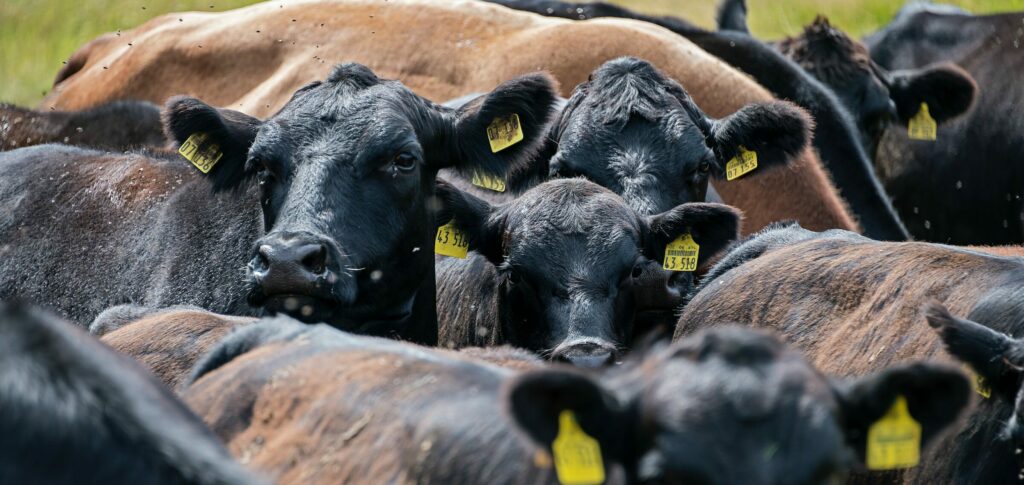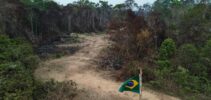🌱 US supports climate reparations negotiations at COP27
The United States has decided to support formal United Nations (UN) negotiations on possible compensation and assistance to countries suffering devastation from storms, floods and droughts made worse by climate changes, government officials said this Wednesday (19)system. (Bloomberg*)
ADVERTISING
The decision adds to an increasing focus on what diplomats call “losses and damages”, a mechanism by which rich nations responsible for the majority of carbon emissions planet warming can address the climate damage suffered by developing countries.
However, officials said American negotiators at next month's U.N. climate summit in Egypt are discouraging any explicit push for new aid or financing in an agenda item framing the negotiations. This would put the US at odds with a large group of vulnerable nations that will be led in negotiations by the Paquistão, where floods left more than 1.700 people dead and caused around US$40 billion in losses.
💲 Bitcoin could be as bad for the planet as meat
The climate impact of Bitcoin mining is comparable to that of raising cattle or burning gasoline when taken as a proportion of market value, according to researchers at the University of New Mexico in the United States.
ADVERTISING
The mining of cryptocurrencies consumes a lot of energy, as it requires highly specialized computers – and most of the electricity used is generated by burning fossil fuels that warm the planet.
The climate-related economic damage caused by Bitcoin mining exceeded its market value on 6,4% of days traded between 2016 and 2021, according to the article published in the scientific journal Scientific Reports. (🇬🇧)
The study calculated the climate cost of Bitcoin mining relative to its average market price and compared it to other commodities such as crude oil, gold or beef. This means that the results do not reflect the total emissions of these industries, which would be much higher, but their relative impact.
ADVERTISING
The climate impact of gold mining is just 4% of its average market price in an average year, compared to 35% for the cryptocurrency Bitcoin. And the environmental impact has grown as the cryptocurrency market has matured, questionI monitor the overall sustainability of the sector.
♻️ Wemove: Braskem's ecosystem that prometransform the way we deal with plastic waste
A Braskem recently announced the launch of Wenew, its circular economy ecosystem, which encompasses four pillars: products, education, technology and circular design.
With it, Braskem's circular products, its education initiatives on conscious consumption and proper disposal, as well as the technologies that support the company on its journey towards the circular economy will be identified by this brand.
In addition to these solutions, Wenew will include, through Wemove, initiatives that bring an approach to environmental education, conscious consumption e proper disposal with the final public.
“This is an initiative that will have a major impact on Braskem’s growth strategy and on achieving plastic waste reduction targets, in other words, it is a big step and an evolution of the company towards the circular economy”, explains Edison Terra, vice president of Olefins and Polyolefins at Braskem in South America.
Among the initiatives presented is the technology – under development – that will enable the production of plastics and chemicals using a circular process with a reduction in carbon dioxide (CO2) compared to the traditional model of advanced recycling.
🍃 Pampa is increasingly distant from its original configuration, says MapBiomas
In the last 37 years, the biome has lost the equivalent of 70 times the area of the municipality of Porto Alegre/RS. Currently, Pampa has more anthropized areas, that is, modified by human action, than native vegetation.
ADVERTISING
In 1985, native vegetation areas occupied 61,3% of Pampa, in 2021 this share was 43,2% – almost the same as agricultural areas, which already occupy 41,6% of the biome. There was a loss of 29,5% of native vegetation between 1985 and 2021 alone, being accentuated in the last two decades. The data are from most recent MapBiomas survey on land use and occupation in the biome, covering a period of 37 years.
Read also
O Curto Verde is a daily summary of what you need to know about the environment, sustainability and other topics linked to our survival and that of the planet.
(🚥): may require registration and/or signature
(🇬🇧): content in English
(*): content in other languages is translated by Google Tradutor
ADVERTISING






